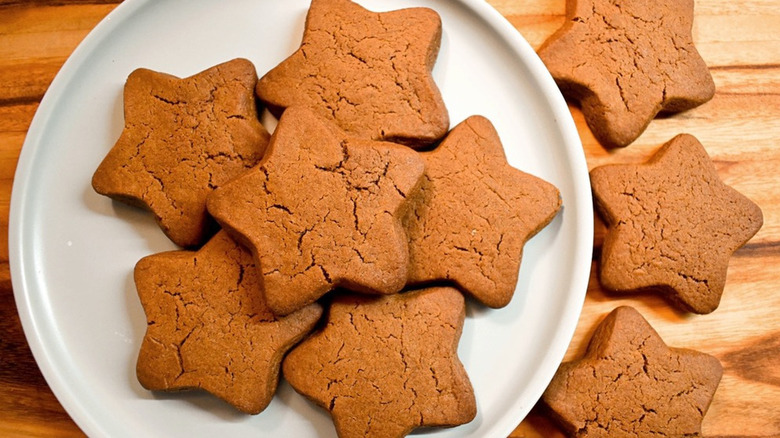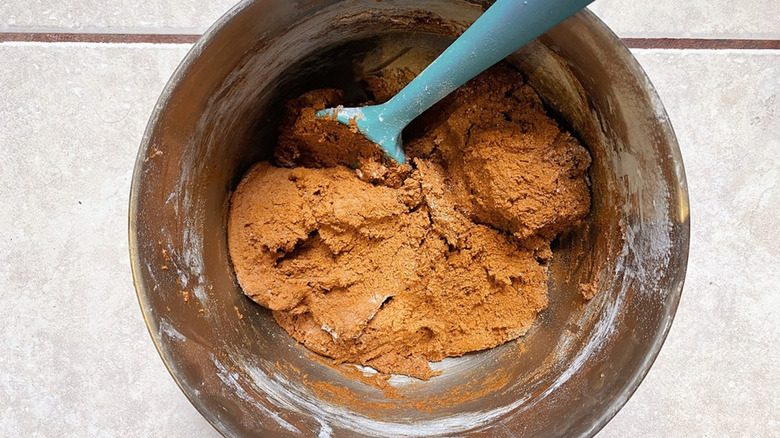The Key To Chewier Gingerbread Cookies Is Baking Soda And Powder
As a kid you probably remember the fun, and oftentimes frustrating, tradition of constructing a gingerbread house. While beautiful, a gingerbread house more closely resembles a piece of hard cardboard than a soft, chewy cookie that you'd actually want to eat. We can't tell you whether or not to include gingerbread house decorating in your traditions, but a freshly baked gingerbread cookie should definitely grace your holiday table. While there's a lot to know about gingerbread and its storied history, the most important thing to know is that gingerbread cookies can be both delicious and simple enough to make at home. Mashed recipe developer Carina Finn developed a gingerbread cookie recipe that is soft and chewy; a far cry from any flavorless brick you've had in the past.
One of the crucial mistakes everyone makes when making gingerbread is not using a different recipe for cookies versus the aforementioned brick-like gingerbread houses. While most recipes, this one included, use a combination of spices to create the cookie's signature warmth along with molasses for its brown color and strong flavor, this recipe's trick for creating a soft and chewy cookie is using both baking soda and baking powder.
What does baking soda and baking powder actually do?
For a soft and chewy gingerbread texture, it's all about the rise, and in this recipe that's thanks to both baking soda and baking powder. Both ingredients act as chemical leavening agents to create a rise in baked goods like cookies and cakes, but they work a little differently. As Mashed recipe developer Carina Finn notes, the baking soda in the recipe interacts with the molasses to create air pockets that give the cookies their initial rise, while the baking powder helps it along with a bit of an extra lift. By combining the two, your gingerbread cookies will have a chewy texture, while remaining soft and light. Using both is the key to this recipe, but it's not just adding the baking powder and soda that will affect the final texture of the cookies, how they're mixed also matters.
While you may be tempted to skip sifting your dry ingredients, it really is important for the soft and chewy texture in these cookies. According to Finn, sifting the dry ingredients ensures the baking soda is evenly distributed for that chemical reaction with the molasses to occur. Without sifting, you run the risk of part of your dough having air bubbles and a great lift, while part comes out like over crisp pancakes. Don't say we didn't warn you!

